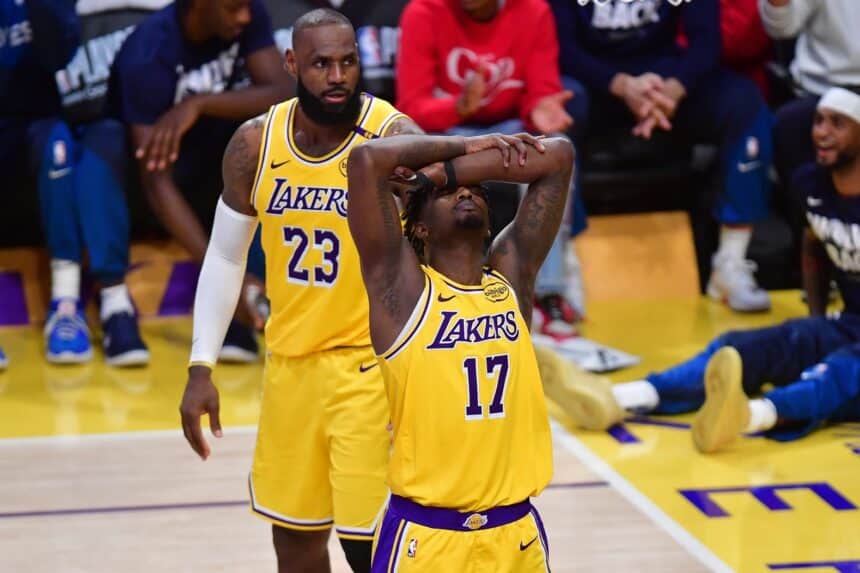The Los Angeles Lakers saw their 2024–25 season come to a premature end in Los Angeles, falling in just five games to the Minnesota Timberwolves in the first round of the NBA playoffs. Despite entering the postseason with high hopes and the rallying cry “Unleash Joy,” the Lakers were outplayed by a younger, deeper, and more physically imposing Minnesota team. The early exit, just 12 days after launching their playoff campaign, has raised significant questions about who this team is, where it’s headed, and why another title run fell short.
The Luka Doncic Trade and Its Aftermath
The Lakers’ season pivoted around a blockbuster midseason trade that sent 25-year-old (at that time) Luka Doncic to L.A. for Anthony Davis. The move aimed to pair Doncic with 40-year-old LeBron James but forced a major tactical overhaul under rookie head coach JJ Redick. Integrating the five-time All-NBA star disrupted team chemistry and required rapid adjustment.
The midseason shake-up caused major fluctuations in the NBA odds for the Lakers, as bookmakers scrambled to reassess the team’s postseason potential with Doncic in the mix.
A Glaring Deficiency in Size and Rim Protection
Perhaps the most critical issue exposed in the series was the Lakers’ lack of frontcourt size and rim protection. After trading Anthony Davis, the team’s initial attempt to acquire a center, Mark Williams, failed when he did not pass the team physical, causing the trade to be rescinded just before the deadline. This left the team without a reliable big man to pair with Doncic.
Failed Center Acquisition
The failed trade for Mark Williams was a significant setback. Williams was reportedly Doncic’s preferred target among potential trade partners, having seen his effectiveness with similar players in Dallas. After the trade fell through, the Lakers signed Alex Len, who played in only 10 of 31 games and failed to crack the rotation.
Gobert’s Dominance
The lack of size was glaringly apparent in the series, particularly in Game 5, where the Lakers were outrebounded 54-37, including 18-8 on the offensive glass. Rudy Gobert, standing 7-1, dominated the boards with 24 total rebounds, nine of which were offensive, and scored 27 points. Jaden McDaniels noted he took advantage when Jaxson Hayes, the Lakers’ primary center option, wasn’t on the court, seeing himself as the tallest person out there.
On-Court Struggles and Coaching Adjustments
The series saw the Lakers falter in critical moments and struggle with consistent execution. They lost Game 1 by 22 points, marking their first playoff opener with LeBron James at home since 2018.
Late-game execution proved costly for the Lakers, as a combined 20 points outscored them in the final five minutes of Games 3 and 4. The team’s season resembled a rushed process of building habits and chemistry—more akin to speed dating than long-term development—ultimately leaving them without the consistency needed for sustained success.
Redick’s Rotation Strategy
First-year coach JJ Redick faced scrutiny for his rotation decisions. In Game 4, he played the same five starters, including Doncic and James, the entire second half – a strategy never previously tracked in nearly 30 years of playoff data.
While Redick defended his consultation with assistants on substitutions, the unique approach highlighted the challenges in finding effective lineup combinations against Minnesota’s depth.
Fading Momentum and Lack of Habits
The Lakers’ season was marked by peaks, like an eight-game winning streak against quality opponents, and valleys, including inexplicable blowout losses. In Game 5, despite a highlight step-back shot from Doncic giving them a one-point lead with 6:30 left, the momentum quickly dissipated as Minnesota closed on a 16-8 run.
The Lakers missed nine of their final 12 shots in that stretch. James had previously acknowledged the need to “rack up great habits” late in the season, suggesting the team struggled with the repetition needed to hone them.
Player Health and Performance Challenges
Injuries and the season’s physical demands hampered the Lakers. Luka Doncic returned after a 5.5-week calf strain recovery, adding extra conditioning to his routine, while 40-year-old LeBron James battled hip and groin issues entering the playoffs. Balancing health and performance proved challenging despite averaging 24.4 points, 7.8 rebounds, and 8.2 assists over 70 games and setting age-related records.
Questions and Crucial Decisions
The early playoff exit thrust the Lakers into an offseason filled with uncertainty and pivotal decisions. A major question mark is LeBron James’ future, as he faces a $52.6 million player option for the 2025-26 season and stated he does not know how much longer he will play. The team can offer Luka Doncic a significant contract extension in August, aiming to build the franchise around him for the next decade.





